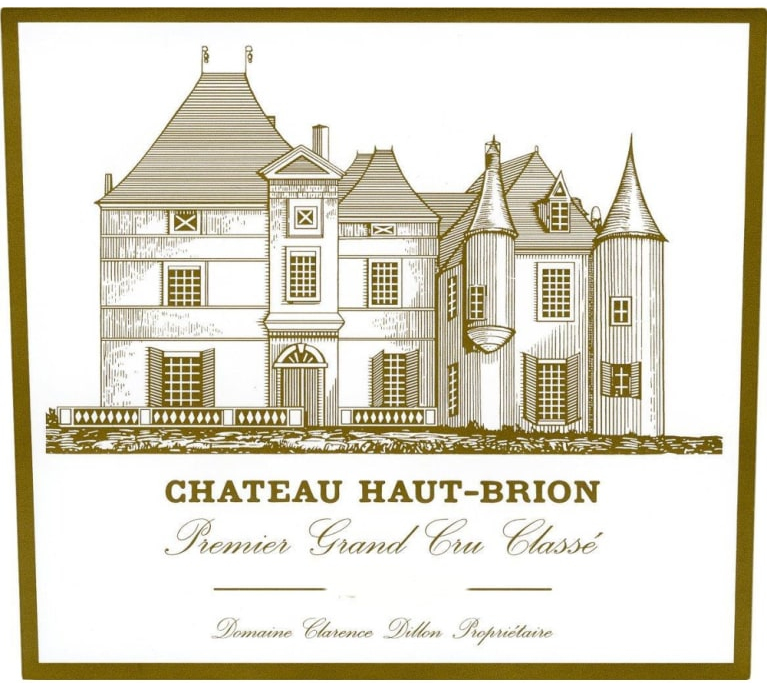Château Haut-Brion 2000
Review of the Estate
Château Haut-Brion is notable for its First Growth status, under both the 1855 and 1973 Mèdoc classifications, despite its geographical location in Graves. This mark of respect is due to the obsession with quality and continual winemaking improvements that have been the dominant modus operandi at Chateau Haut Brion over the past four centuries.
The modern estate grew from humble origins as a property known as Maison Noble d'Aubrion which was acquired by Jean de Pontac through his marriage to Jeanne de Bellon in 1525.
Pontac was responsible for expanding Chateau Haut-Brion, and creating an international market for the wines, the quality of which was noted by Samuel Pepys who wrote in April 1663,"here I drank a sort of French wine, called Ho Bryan, that hath a good and most particular taste that I never met with." However, Chateau Haut Brion was still known formally as Château Pontac until the late 18th Century when it eventually passed out of the Pontac family's hands.
As the first recorded First Growth to be imported into the United States, when Thomas Jefferson purchased six cases during his travels and sent them back to his home in Virginia, it is perhaps unsurprising that Chateau Haut-Brion was eventually purchased by an American. After a string of owners, financier Clarence Dillon acquired the estate in 1935. Chateau Haut Brion is currently owned by Domaine Clarence Dillon, which is a limited company and thereby prevents excessive divisions of the estate between successive generations. Presently, Prince Robert of Luxembourg is at the helm, with Jean-Philippe Delmas managing the viticultural aspects of the business.
As a First Growth, there is constant pressure to produce outstanding yet consistent wines and Château Haut-Brion has consistently embraced new technologies to meet this standard. In the 1960s, the estate pioneered the installation of stainless steel vats - the first of the First Growths to do so. This increased the reliability of the vinification process and positioned Chateau Haut Brion at the forefront of innovation in the Bordeaux region, producing a savoury wine which is both rich and intricate.

Vineyard
Surface area: 106.7 acres
Grape Varieties: 45% Cabernet Sauvignon, 37% Merlot and 18% Cabernet Franc
Average age of vines: 36 years
Density of plantation: 8,00 vines per hectare
Average yields: 35-45 hectoliters per hectare
Average cases produced: 11,000 per year
Plateau of maturity: 10 - 40 years
Château Haut-Brion 2000 Reviews / Tasting Notes
Neal Martin - The Wine Advocate
Point Score: 99+
Tasted from an ex-chateau bottle in Bordeaux, I was not surprised to find the 2000 Chateau Haut-Brion flirting with perfection. The nose is simply breathtaking - quintessential Haut-Brion with ebullient red berry fruit, roasted herbs, gravel, terracotta tiles on a warm summer's day...it is simply wave after wave of intoxicating scents that could bring even the most stoic person to tears of joy. The palate displays heavenly balance, pitch-perfect acidity, perhaps spicier than previous bottles that I have tasted, and what depth and dimension in this outstanding wine. That hint of graphite on the finish is a cheeky nod to Pauillac, as if to thumb its nose at the First Growths, because alongside Chateau Latour, almost by stealth, the Haut-Brion is one of the greatest Bordeaux in this millennial year. Tasted November 2014.
Wine Spectator
Point Score: 92-94
Really ripe, with a powerful berry and marmalade character on the nose. Full-bodied, with silky tannins and a long finish. Very fresh and fine. Almost classic. Not the fabulous 1998 Haut-Brion, but damn good. Score range: 92-94
Decanter
Point Score: 100
Is this as good as the 1989? Certainly it is lush and powerful, lingering and expanding in the mouth with sweet tobacco and cigar box notes, along with still young blackcurrant and blackberry fruits, all given lift by the trademark Haut-Brion aromatics. It beds in and shakes off early reticence after a good hour in the glass, suggesting that this is only just leaving its primary phase and has many decades left ahead of it. A great wine that highlights the success of Haut-Brion under the partnership of estate director Jean-Bernard Delmas, father of current director Jean-Philippe Delmas, and owner Joan Dillon the Duchess of Mouchy (president of the company until 2008 before handing over to her son Prince Robert of Luxembourg). A supremely confident wine that is hard to fault in its depth of expression.